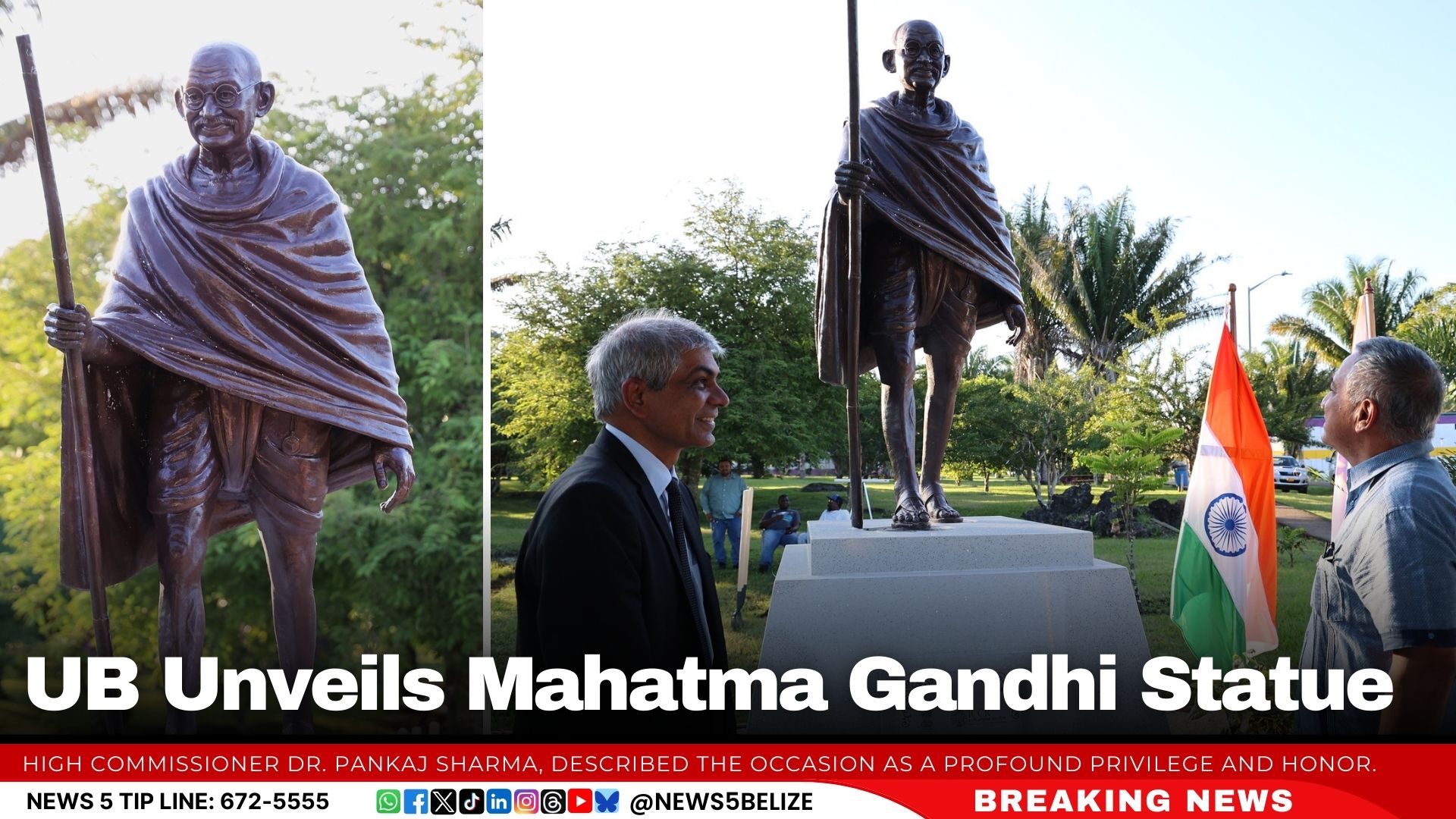On Friday, the University of Belize unveiled a statue of Mahatma Gandhi, the iconic political ethicist celebrated for his leadership in nonviolent resistance that led to India’s independence from British rule. Gandhi’s enduring legacy of peaceful protest continues to inspire civil rights and freedom movements worldwide.
High Commissioner of India to Belize, Dr. Pankaj Sharma, described the occasion as a profound privilege and honor. “This institution, as a beacon of learning and enlightenment, is a fitting place for the likeness of Mahatma Gandhi, who held education in the highest regard.”
Dr. Vincent Palacio, President of the University of Belize, reflected on the two-month anticipation surrounding the Mahatma Gandhi statue, which was hidden under a blue tarp awaiting the Prime Minister’s unveiling. Dr. Palacio stressed the statue’s alignment with the university’s mission of fostering critical thinking, compassion, and leadership, inspired by Gandhi’s principles of truth, harmony, and equality. “This unveiling of the Mahatma Gandhi statue is a ceremony and reflection of our values: peace, nonviolence, and the transformative power of education. Hosting this statue on our campus, on the campus of our university, this institution, is deeply fitting.”
Prime Minister John Briceño attended the unveiling. He said, “There are a lot of similarities with the Father of our Nation, George Price. Both of them were extremely spiritual. Both of them were extremely humble. But both of them had this will of steel that cannot be bent.”
